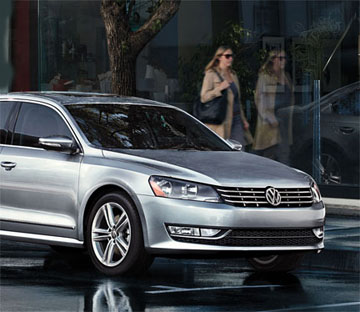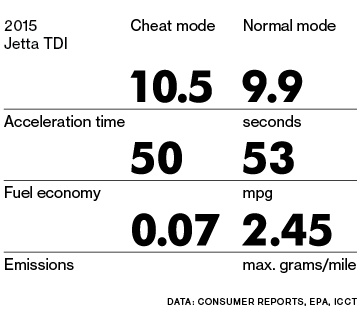It started with a minor commission for West Virginia University. An environmental group, the International Council on Clean Transportation, had asked the school’s Center for Alternative Fuels, Engines and Emissions to test the emissions of diesel cars in the U.S., such as those sold by Volkswagen and BMW. The “clean diesel,” cars touted excellent fuel efficiency without sacrificing muscular acceleration.
From February through April 2013, they tested three diesel cars: a Volkswagen Jetta, a Volkswagen Passat, and a BMW SUV. During the initial assessment, using dynamometers, the cars emitted almost nothing. When they took the cars on the road, however, the results were different. The two Volkswagens’ emissions exceeded standards by 5 to 35 times. The BMW’s didn’t.

In March 2014 they presented their findings at conference in San Diego – but no one took a lot of notice. But slowly more facts came out. On Sept. 3, 2015, VW admitted to U.S. and California regulators that it had deliberately outfitted them with “defeat devices” that sensed when an official emissions test was under way and temporarily trapped the worst of the exhaust. A software ‘fix’ for the engine control computer.
Was this done by just a few, maybe even only one, engineer(s) under pressure to get the important engines to pass emissions tests? Hard to believe a lot of people didn’t know about this. We may or may not find out as a result of VWs investigations, but obviously at least one engineer with poor integrity was involved.
VW’s new CEO, Matthias Müller, has said a company investigation so far points to a small circle of employees as being involved in the scheme. Its U.S. chief, Michael Horn, told a congressional committee the same thing: “This was a couple of software engineers who put this in for whatever reasons,” he said.
A recent article in Bloomberg Businessweek (How Could Volkswagen’s Top Engineers Not Have Known? Oct. 21st ) outlined the history and added something important I’ve been wondering about. How much will removal of the ‘fix’ effect performance of the 482,000 cars with ‘clean diesel’ engines VW & Audi sold in the U.S.? If we can believe the EPA estimates, it looks something like the box shown here. So VW may be able to change the software to yield good emissions for a penalty of 0.6 seconds to 60 MPH and 3 MPG.

That’s not terrible, but if I was a car owner I’d be – shall we say – very disappointed. And then all those cars have been going around polluting our air since 2009. All because of one or two engineers. Well, we’ll see about that – maybe.
In the mid-2000s, as fears of climate change helped drive increasingly stringent emissions rules, especially in the U.S. Federal and state regulators began to lay down timelines for new requirements that would demand ingenious feats of engineering. This spawned electric hybrids from Toyota and others, but WV said diesel was the solution.
In 2005 Wolfgang Bernhard had been hired to head the VW brand and solve the puzzle of a next-generation, four-cylinder diesel engine. He chose a Daimler invention called BlueTec that sprayed urea into the exhaust stream to neutralize harmful nitrogen oxides. Then, in November 2006, Volkswagen’s CEO was ousted in a boardroom battle. The new CEO, Martin Winterkorn, got rid of Bernhard, too. They then scrapped the BlueTec deal. They wanted to avoid urea tanks, which were expensive and took up precious space in small cars. That decision boxed Volkswagen engineers in as they tried to meet emissions targets with good performance and fuel efficiency. The engineers created a system with traps in the tailpipe to catch some of the harmful substances and a method to scrub away nitrogen oxide by pumping extra fuel into the engine’s cylinders and onward to the exhaust system, where it reacted with other pollutants to form harmless waste. They called it a Lean NOx Trap.
Apparently it didn’t trap enough at the performance level desired, so in order to get cars going out the door some software “adjustments” were made. VW has now said they will start using the urea method like most other manufactures. Meanwhile current owners face a performance hit, assuming the EPA makes VW fix those cars. But, if the estimates are correct, it doesn’t seem like it’s a really large hit.
This is not new. According to Bloomberg, in 1995 General Motors agreed to pay $45 million after being accused of installing a chip that turned off pollution controls on 470,000 Cadillacs when the air conditioning came on.
It will be interesting to see how far up the engineering management chain the blame will go. VW is under a lot of pressure right now for more information. If they can hold off for a while maybe the regulators will forget about it.
Advertisement
Learn more about Electronic Products Magazine





